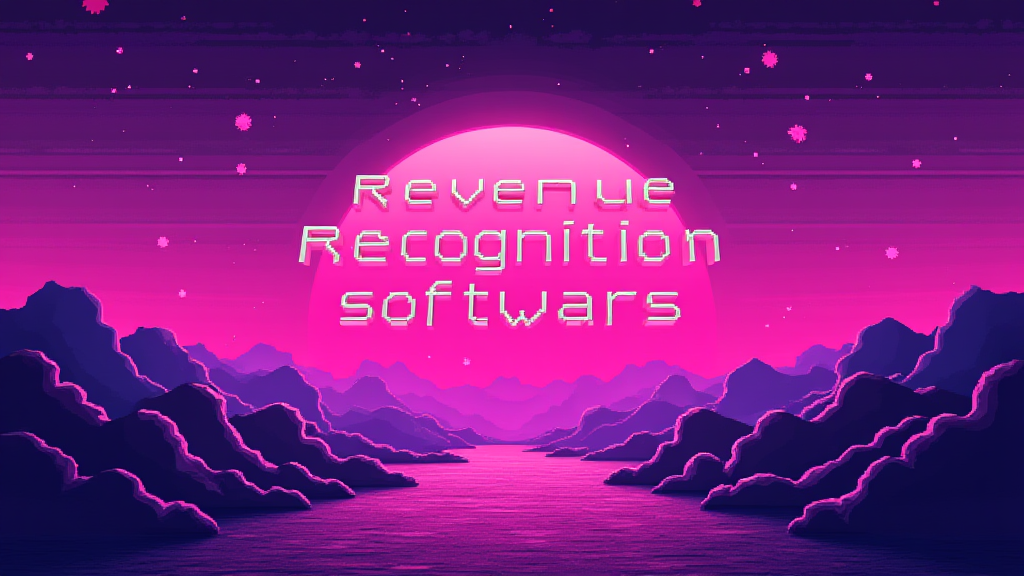Revenue Recognition Software: Streamline Financials

Published on: October 01, 2024
In the complex world of financial management, Revenue Recognition Software has emerged as a crucial tool for businesses, particularly in the software and SaaS industries. This specialized software automates and streamlines the process of recognizing revenue in compliance with accounting standards such as ASC 606 and IFRS 15. 💼💻
Understanding Revenue Recognition Software
Revenue Recognition Software is designed to help companies accurately record and report revenue from various sources, including software licenses, subscriptions, and services. It ensures that revenue is recognized in accordance with Generally Accepted Accounting Principles (GAAP) and international financial reporting standards.
Key Features of Revenue Recognition Software
- Automated revenue allocation
- Contract management
- Performance obligation tracking
- Multi-element arrangement handling
- Compliance reporting
- Integration with existing financial systems
Why Revenue Recognition Software Matters
For Sales, Marketing, and Revenue Operations professionals, understanding the importance of Revenue Recognition Software is crucial. Here's why:
- Accuracy: Reduces human error in complex calculations
- Compliance: Ensures adherence to ASC 606 and IFRS 15 standards
- Efficiency: Automates time-consuming manual processes
- Visibility: Provides real-time insights into revenue streams
- Scalability: Adapts to growing business needs and complex revenue models
Revenue Recognition Challenges in the Software Industry
The software industry faces unique challenges when it comes to revenue recognition:
| Challenge | Solution |
|---|---|
| Multi-element arrangements | Automated allocation of revenue |
| Subscription-based models | Recurring revenue management |
| Contract modifications | Dynamic contract handling |
| Performance obligations | Obligation tracking and fulfillment |
Implementing Revenue Recognition Software
When implementing Revenue Recognition Software, consider the following steps:
- Assess your current revenue recognition process
- Identify key stakeholders and their requirements
- Evaluate different software options
- Plan for data migration and system integration
- Provide thorough training for your team
- Monitor and optimize the system post-implementation
The Impact on Sales and Marketing Operations
Revenue Recognition Software doesn't just benefit the finance department. It also has significant implications for Sales and Marketing Operations:
- Improved forecasting accuracy 📊
- Better alignment between sales and finance teams
- More informed pricing strategies
- Enhanced customer lifecycle management
- Data-driven decision making for marketing campaigns
Choosing the Right Revenue Recognition Software
When selecting Revenue Recognition Software, consider these factors:
- Compatibility with your existing tech stack
- Scalability to accommodate business growth
- Customization options for your specific industry needs
- Reporting capabilities and analytics features
- Vendor support and implementation assistance
By leveraging Revenue Recognition Software, businesses can ensure compliance, improve financial accuracy, and gain valuable insights into their revenue streams. This technology is becoming increasingly essential in the ever-evolving landscape of software and SaaS industries.
Questions to Consider
As you explore implementing Revenue Recognition Software in your Sales or Marketing Stack, ask yourself:
- How can automated revenue recognition improve our financial reporting accuracy?
- What impact will this software have on our sales forecasting and commission calculations?
- How can we use the insights from this software to optimize our pricing and packaging strategies?
- In what ways can Revenue Recognition Software help us better understand and manage customer lifetime value?
- How can we leverage this technology to create more alignment between our sales, marketing, and finance teams?

















